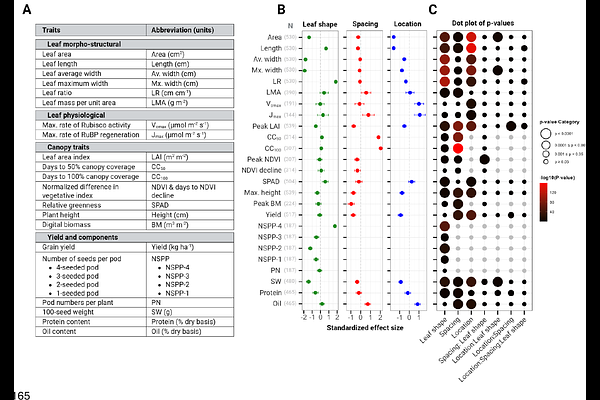Bigger is not always better: Optimizing leaf area index with narrow leaf shape in soybean

Bigger is not always better: Optimizing leaf area index with narrow leaf shape in soybean
Tamang, B.; Bernard, G.; Bernacchi, C.; Diers, B.; Ainsworth, E.
AbstractModern soybean varieties have higher than optimal leaf area index (LAI), which could divert resources from reproductive growth. Altering leaf shape could be a simple strategy to reduce LAI. To test this, we developed 204 near-isogenic soybean lines differing in leaf morphology by introgressing narrow-leaf alleles from donor parents PI 612713A and PI 547745 into the elite, broad-leaf cultivar LD11-2170. We evaluated the lines across two locations and two row spacings (38-cm and 76-cm) to assess how reduced investment in leaf area influences canopy architecture, crop physiology, and yield. Narrow-leaf lines showed 13% lower peak LAI and 3% lower digital biomass compared to broad-leaf counterparts yet maintained yield parity (5,756 vs. 5.801 kg ha-1, p = 0.43) across environmental conditions. Photosynthetic capacity remained largely unchanged, with narrow-leaf lines showing modest increases in electron transport rate and leaf mass per area. Narrow-leaf lines achieved similar canopy closure timing despite lower LAI, suggesting architectural compensation mechanisms. The most striking difference appeared in seed packaging, with narrow-leaf lines producing 34% four-seeded pods compared to only 1.8% in broad-leaf lines. There was a nonlinear relationship between peak LAI and yield, with optimal LAI values of 9-11 varying by environment. These findings show that the single-gene GmJAG1-controlled narrow-leaf trait offers a tractable strategy for reducing LAI and maintaining high productivity. This could reduce the metabolic costs associated with excessive canopy development and support sustainable agriculture under increasing climate variability.